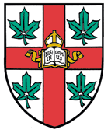

HISTORY OF THE ANGLICAN CHURCH OF ST. PHILIP
During the early years our church services were held in individual homes, and we were part of a large mission stretching from Holyrood to Cape St. Francis.
Our church history is a memorable one reaching back to June 26, 1848 when our first place of public worship was erected in our community then called Broad Cove. Bishop Field dedicated our newly constructed church to the name of the Church of St. Philip the Apostle. On that day the celebrations concluded with repeated sounds of sealing-guns and the hearty cheers of our people.
After many years of service the old church building required additions/changes and on November 20th, 1895 our then refurbished church was consecrated with much reverence and celebration – yet another memorable date in the history of Broad Cove.
We continued to share a parish with Portugal Cove, however our Christian Community grew strong in faith and in numbers and we felt it time we became a self supporting congregation; consequently on July 1, 1986
St. Philips congregation became the ‘Parish of St. Philip’.
As both the Parish and the ministries grew, so did the need to update and improve our church facilities. Modifications and/or extensions to the existing church were explored, but abandoned due to the building codes and regulations as well as the public opinion. Since its inception in 1986,
St. Philips Parish has been energetic and innovative. The families continued to work hard and long to improve our Parish Life.
This dedication and determination allowed us to complete the construction of the modern building we now occupy. Our first service was held on December 14, 2003 with much jubilation and excitement.
The Anglican Parish of St. Philip became debt free by 2011.
“The really significant history of a church is not revealed in the simple account of its physical and statistical milestones. The church is a part of the living body of Jesus Christ and its real life is in its worship, study, fellowship, service and commitment.”
HISTORY OF OUR DIOCESE...
The earliest presence of the Anglican Church in Newfoundland and Labrador can be traced to stopovers by various military chaplains and visiting clerics in the 16th and 17th centuries. Their stays were often quite brief and not conducive to the development of permanent ecclesiastical structures. It was not until 1701, under the auspices of the Bishop of London and later the Society for the Propagation of the Gospel in Foreign Parts (S.P.G.), that the first resident clergyman was appointed. In 1787 Newfoundland was placed under the jurisdiction of the Bishop of Nova Scotia and in 1839 received its first resident Bishop, Aubrey George Spencer, when diocesan status was granted. His Episcopal jurisdiction included both the island of Newfoundland and the coast of Labrador, as well as Bermuda in the Caribbean. Bishop Spencer was succeeded in 1844 by Edward Feild who served until 1876. In 1879 a Bermuda Synod was incorporated but requested that the Bishop of Newfoundland at the time, Llewellyn Jones, occupy that see along with his own which he did so until 1917.
The Diocese of Newfoundland joined the Anglican Church of Canada in 1949 when Newfoundland became the 10th province of Canada. Subsequent growth led, in 1976, to the reorganization of the one diocese into three. Today, along with the Diocese of Eastern Newfoundland and Labrador with its cathedral at St. John's, there is the Diocese of Central Newfoundland (Gander) and the Diocese of Western Newfoundland (Corner Brook). All three dioceses enjoy a close relationship, managing matters of common interest through the Joint Committee and sharing equally in the governance of Queen's College. As of 2005, the Diocese of Eastern Newfoundland and Labrador is spread over 38 parishes on the Avalon Peninsula of Newfoundland and throughout most of Labrador.
